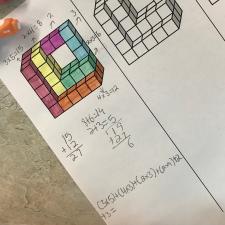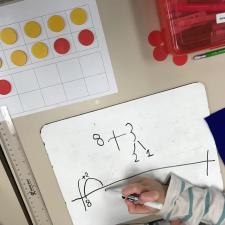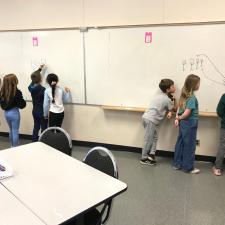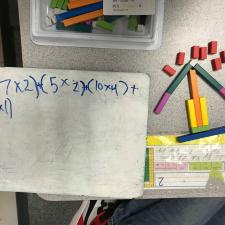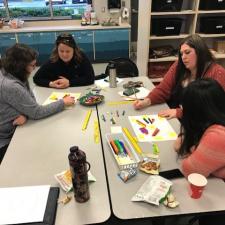
We Are All Math People
In my role as the Numeracy Helping Teacher, students and teachers alike often tell me that they are not a “math person” when we’re working together. I’ve learned that this means they likely haven’t had many opportunities to experience math with a focus on numeracy. But what is numeracy? Isn’t it the same thing as mathematics? Not quite…
The best way to understand the word “numeracy” is to think about supporting students in becoming numerate. A numerate student can confidently interpret, apply, solve, analyze, and communicate about the mathematics (that is, multiplication, fractions, geometry, etc.) involved in solving a problem. When people tell me they aren’t “math people,” what I hear is that they are struggling to be numerate.
Someone who is numerate conceptually understands percentages and can then apply this understanding to estimate a 20% tip at a restaurant without using a calculator. A numerate student can think about how many pizzas to order for an end-of-year celebration by applying their understanding of estimating, fractions, multiplication, addition, and financial literacy.
Building numeracy moments regularly into a math block gives students a chance to become confident in matching the mathematics they have learned with real-life scenarios. The key to these experiences is first to build students’ conceptual understanding of math concepts. Using hands-on manipulatives like Cuisenaire Rods for fractions, 10 frames for number sense, and algebra tiles for two-step equations can help build a deep understanding of these math concepts. This helps students think critically about what mathematics they could apply in a numeracy situation. High-yield routines like Number Talks, Which One Doesn’t Belong, and Would You Rather Math are all numeracy-focused activities that allow students to apply the mathematics they’ve learned. The Thinking Classroom structure, created by Peter Liljedahl, relies on students to collaboratively decide on and apply mathematics of their choosing to solve complex numeracy problems. Peter has a collection of incredible numeracy tasks on his website that can be used in and out of a Thinking Classroom structure.
Each of us is a “math person,” even if it can be hard to see it in ourselves sometimes. When we can find ways to balance students’ opportunities to have both math and numeracy moments, we can help both ourselves and our students become more numerate, which builds confidence, perseverance, and critical and creative thinking in math. Visit the Curriculum Resources website and check out the Math section to find more numeracy routines and suggestions for problem-solving.
TAWNIE HILDEBRANDT, NUMERACY HELPING TEACHER (GR K-8)
Curriculum Department

